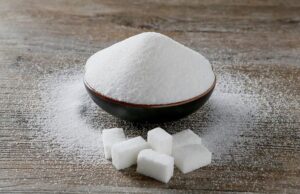
The Interfax-Ukraine news agency has released the 1,000th anniversary issue of its German-language news digest Business Woche. This product allows users from Germany and other German-speaking countries to receive timely and objective information about the latest events in Ukraine, as well as analytical data and statistics on key sectors of the country’s economy.
Business Woche has become an important information bridge between Ukraine and the German-speaking world. The digest includes news on politics, economics, agriculture, energy, as well as information on construction, real estate, retail, and telecommunications. It also covers issues related to the development of transport infrastructure, metallurgy, mechanical engineering, and pharmaceuticals, which are important to an international audience.
The product provides readers with up-to-date information on the economic situation in Ukraine, including analysis of macroeconomic indicators such as GDP, inflation, and unemployment, making it an important tool for monitoring and analyzing the situation in Ukraine.
Interfax-Ukraine is actively developing its line of information products in different languages. The agency plans to expand its language diversity in the future in order to deliver news from Ukraine to an international audience even faster and more conveniently.
Interfax-Ukraine has ambitious plans for the further development of its information activities aimed at supporting global information exchange. According to Maxim Urakin, deputy director general of the agency and editor of Business Woche, this initiative reflects not only the growing interest in events in Ukraine on the international arena, but also the desire to be at the forefront of the information space.
“Our goal is to provide our readers and subscribers with the opportunity to receive information quickly, accurately, and in languages convenient for them, which will contribute to a better understanding and analysis of Ukrainian realities on the international arena,” Maxim Urakin emphasized.
Interfax-Ukraine is an independent Ukrainian news agency specializing in providing up-to-date information on events in the country and around the world. The company supplies its information products to many countries, helping to form an objective picture of events for an international audience. It has been operating in the Ukrainian political and economic information market since 1992 and has a reputation as the most authoritative and competent provider of up-to-date information.
The agency’s editorial office (head office) is located in Kyiv. Interfax-Ukraine is not part of any foreign media holding company. The founder of Interfax-Ukraine was Oleksandr Martynenko.

In recent years, Albania has transformed from a “hidden beach destination” into one of the most dynamic real estate markets in the Mediterranean. In 2024, foreigners invested around €380 million in Albanian real estate — 17% more than in 2023. This is the third consecutive year that real estate has ranked first in terms of attracting foreign investment, accounting for around 24% of total FDI inflows.
According to a study by the Experts Club information and analytical center, in recent years, foreigners have accounted for about a quarter of all home purchase and sale transactions in Albania. Most of the interest is concentrated on the coast — Saranda, Ksamil, Vlora, Durres, and the vicinity of Tirana. Below is an informal top 10 list of countries whose citizens are most actively investing in real estate in Albania: Italians — their “own” Riviera at half the price. Italians were among the first to discover Saranda and Ksamil. Demand from Italy has doubled in recent years, especially for apartments by the sea.
Poles, Czechs, and Slovaks — investors focused on profitability. These buyers account for up to 90% of demand in some resort areas, investing in small apartments for daily rent with an expected ROI of 10-16%.
Germans and Swiss are looking for stability and quality. They prefer the “quiet” segment on the coast and in Tirana, with good infrastructure and stable rental income.
Scandinavians appreciate Albania’s climate and nature.
Norway, Sweden, and Finland are also actively buying real estate, choosing high standards of living at moderate prices.
The French and British are “latecomers” but active. Interest in Albania from these countries is growing, attracting them with relatively low prices compared to southern France and Spain.
Americans are betting on “early entry.” Albania remains a “new” destination for Americans, with growing interest in villas and large apartments.
Ukrainians are a growing but niche segment. After 2022, interest from Ukraine has grown significantly, and Ukrainians prefer the coast for relocation and obtaining a residence permit.
Russians and other post-Soviet investors — due to sanctions pressure, their share has decreased, but interest still remains, especially through companies and relatives.
Citizens of Kazakhstan and Belarus continue to invest actively, especially on the coast and in large cities.
Other EU countries are actively buying on the south coast, especially during the high tourist season.
Why Albania attracts foreign investors:
Free access to housing. Foreigners can freely buy apartments, houses, and commercial real estate, with the exception of agricultural land.
High profitability and price growth. Annual rental yields on the coast can reach 7% and above, and in peak tourist locations — up to double digits.
Strong investment flow. In 2024, foreign investment in real estate amounted to approximately €380 million, and in the second quarter of 2025, this figure reached a record €149 million.
Residence permit and “life package.” Laws on foreigners allow you to obtain a residence permit based on investment in housing.
Risks and prospects: The sharp influx of foreign investors is already leading to higher housing prices for the local population. However, Albania remains an EU candidate country with large-scale infrastructure projects (a new airport in Vlora, reconstruction of the port in Durres), which supports long-term demand for housing.
Despite growing competition in the market, Albania retains its potential as “Europe’s last affordable Riviera,” making it attractive to investors, but professional legal due diligence and an understanding of real returns are required to enter the market.

Republican Senator Bernie Moreno (Ohio) has announced his intention to introduce the Exclusive Citizenship Act of 2025 to Congress, which effectively abolishes dual citizenship for US citizens. The bill stipulates that Americans will not be able to hold US citizenship and the citizenship of any other country at the same time.
According to specialized media reports, the bill contains two key provisions. First, any person who applies for foreign citizenship after the law comes into force will automatically be considered to have renounced their US citizenship. Second, current dual citizens will be given a one-year transition period during which they must either renounce their foreign passport or notify the authorities in writing of their renunciation of US citizenship. Failure to do so will result in the loss of US citizenship.
Enforcement of the law will be entrusted to the State Department and the Department of Homeland Security, which will be required to create systems for registering individuals who have lost their citizenship and mechanisms for monitoring compliance with the new rules. The initiative has already sparked debate in the media, particularly because it could affect well-known public figures who hold dual citizenship.
Experts note that the bill will face challenges from both a political and legal standpoint. The US Supreme Court, in a series of decisions, including Afroyim v. Rusk (1967) and Vance v. Terrazas (1980), has clearly established that a citizen cannot be deprived of citizenship without voluntarily renouncing it, and that the mere existence of dual citizenship cannot automatically be interpreted as grounds for its loss.
Given these precedents, as well as the political situation in Congress (resistance from Democrats and likely reservations from some Republicans), the chances of the bill being passed in its current form appear slim. Most likely, the initiative will become part of the domestic political debate on immigration and citizen loyalty.

In January-September 2025, Insurance Guarantees of Ukraine (IGU, Kyiv) collected UAH 1.3 million in gross premiums, which is 1.88% less than in the same period of 2024, according to data from the rating agency Expert-Rating confirming the insurer’s financial stability rating for the first nine months of 2025 at “uaAA” on the national scale.
The information notes that the company did not make any insurance payments during this period in 2025.
It is also noted that the equity capital of SSU PJSC for the period ending September 30, 2025, decreased by 10.23% to UAH 49.52 million, while gross liabilities increased by 36.39% to UAH 1.31 million.
The amount of cash and cash equivalents in the company’s accounts as of the reporting date decreased by 11.48% and amounted to UAH 45.46 million.
For the first nine months of this year, the company received UAH 2,570 in net profit, which is 4.7 times less than a year earlier.
SGU PJSC was registered in November 2005. It has licenses to carry out 15 types of insurance activities: four for compulsory insurance and 11 for voluntary insurance.

The global ranking of armed populations, compiled on the basis of the Small Arms Survey, shows that the ten countries with the largest number of civilian weapons include the United States, India, China, Pakistan, Russia, Brazil, Mexico, Germany, Yemen, and Saudi Arabia. Ukraine is not on this list, but even before Russia’s full-scale invasion, the country was among the states with a significant amount of weapons in the hands of citizens. The Experts Club Analytical Center analyzed global and Ukrainian statistics.
According to the Small Arms Survey for 2017-18, there were about 4.4 million civilian weapons in Ukraine—approximately 9.9 guns per 100 inhabitants. Of these, only about 800,000 were officially registered, and about 3.6 million belonged to the illegal segment.
According to the National Police database, as of July 31, 2018, there were 892,854 registered weapons in the country. In 2021, the Ministry of Internal Affairs estimated the number of weapons legally owned by citizens at approximately 1.3 million, against the backdrop of tighter regulations and growing public interest in self-defense after 2014.

The full-scale war of 2022 dramatically changed the picture. Against the backdrop of the formation of territorial defense and volunteer units, the state massively transferred small arms to citizens; at the same time, a significant number of captured and illegal firearms ended up in the hands of the population. Estimates today vary widely: according to Interior Minister Ihor Klymenko, Ukrainians may have between 1 and 5 million weapons, while a number of think tanks put the figure at 4–5 million, of which 2–3 million may be in illegal circulation.
Research by Small Arms Survey using sociological surveys shows that up to 11% of Ukrainian households may have at least one weapon, which on a national scale gives a range of 865,000 to 1.42 million armed households. At the same time, the share of households that openly report the presence of weapons in 2023–2024 remains at 5–6%, which indicates both a high level of distrust and the sensitivity of the issue in wartime.
To bring order, Ukraine has launched a Unified Weapons Register. By July 2024, 63% of households that own weapons stated that some or all of their weapons were registered; among those who are aware of the system, 74% claim to have registered all their weapons, but about 10% continue to keep unregistered weapons.
Thus, while before the war there were approximately 1.3 million registered weapons in Ukraine and several times more illegal firearms, now, against the backdrop of full-scale hostilities, there are millions of weapons, a significant portion of which must gradually be registered or confiscated.
This makes the issue of civilian weapons control one of the key issues for post-war security, law enforcement reform, and Ukraine’s negotiations with the EU on the harmonization of weapons legislation.
Source: https://expertsclub.eu/ukrayina-na-tli-svitovogo-rynku-czyvilnoyi-zbroyi/

In the first three months of the 2025-2026 marketing year (September-November), Ukraine exported 116,100 tons of sugar, of which about 95% was sent to the world market, according to the National Association of Sugar Producers of Ukraine “Ukrtsukor.” According to the association, in September-November 2025, the following structure of Ukrainian sugar exports to the main buyer countries was formed:
Lebanon – 37% of the volume of supplies,
Syria – 18%,
North Macedonia – 8%,
Bosnia and Herzegovina – 7%,
United Arab Emirates – 7%.
Thus, the top five importers accounted for more than three-quarters of all sugar exports during the period. The remaining volumes were distributed among other countries in the Middle East, Africa, and selected European markets.
Ukrtsukor specified that as of the first ten days of November 2025, 26 sugar factories belonging to the association produced 880,000 tons of sugar, which is 100,000 tons, or 10.2%, less than on the same date in 2024.
Of the total exports in 2024/2025 MY, 17% went to EU countries and 83% to the global market, while in the previous season the ratio was 77% to the EU and 23% to other destinations.
According to industry estimates, the main buyers of Ukrainian sugar in 2024/2025 MY were the EU as a whole, Turkey, Libya, North Macedonia, Lebanon, and Somalia, with Bulgaria remaining the largest importer among EU countries.